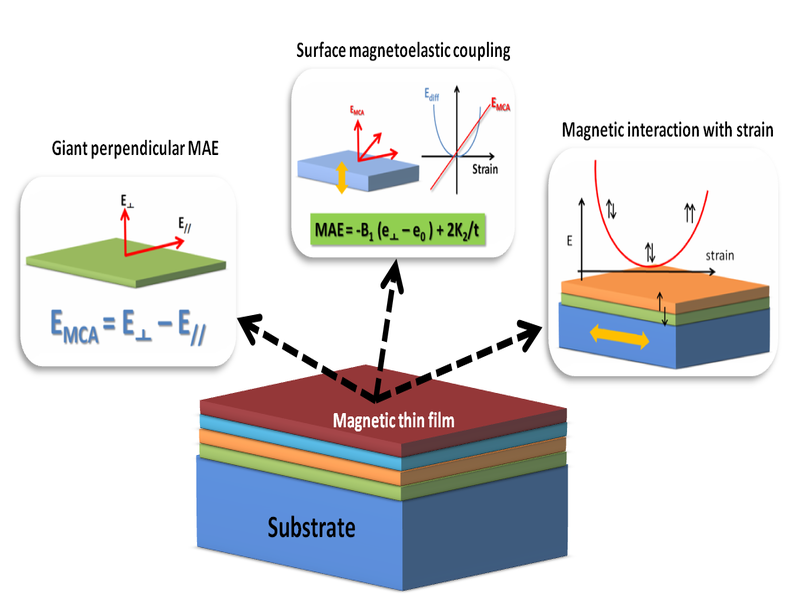Thin film magnetism

Magnetic Anisotropy in magnetic thin film
In the thin films magnetism, magnetic anisotropy is one of the most important physical properties due to the potential application for spintronics device. The magnetic anisotropy energy (MAE) can be defined as combination of two factors, magnetocrysalline anisotropy (MCA) and shape anisotropy energy. The shape anisotropy related with dipolar interaction and always prefer to in-plane magnetization in the film structure. The MCA caused by spin-orbit interaction and is significantly sensitive to change of the wave function character. The MCA energy is given by the difference between total energies of perpendicular magnetization and in-plane magnetization. The magnetic anisotropy can be changed by various factors such as film thickness, interface structure, and modification of surface geometry. Based on ab-initio method, we investigate magnetic anisotropy energy in various systems.
Magneto-elastic coupling in surface systems
In ferromagnetic materials, magnetic anisotropy can be modified by lattice strain. This is called magneto-elastic coupling. The magneto-elastic (MS) properties of ultrathin films quite differ with bulk. In low dimensional systems, the magneto-elastic coupling coefficients can be considered by two factors, surface and bulk coefficients. Previously, there were many experimental approaches to measure surface and bulk magneto-elastic constant of ultrathin film structures such as Co/Cu(001) and Co/Cu(111). In this part, we study thickness dependent MS constant using the first principle calculations.
Contact:
Dongyoo Kim, Researcher
